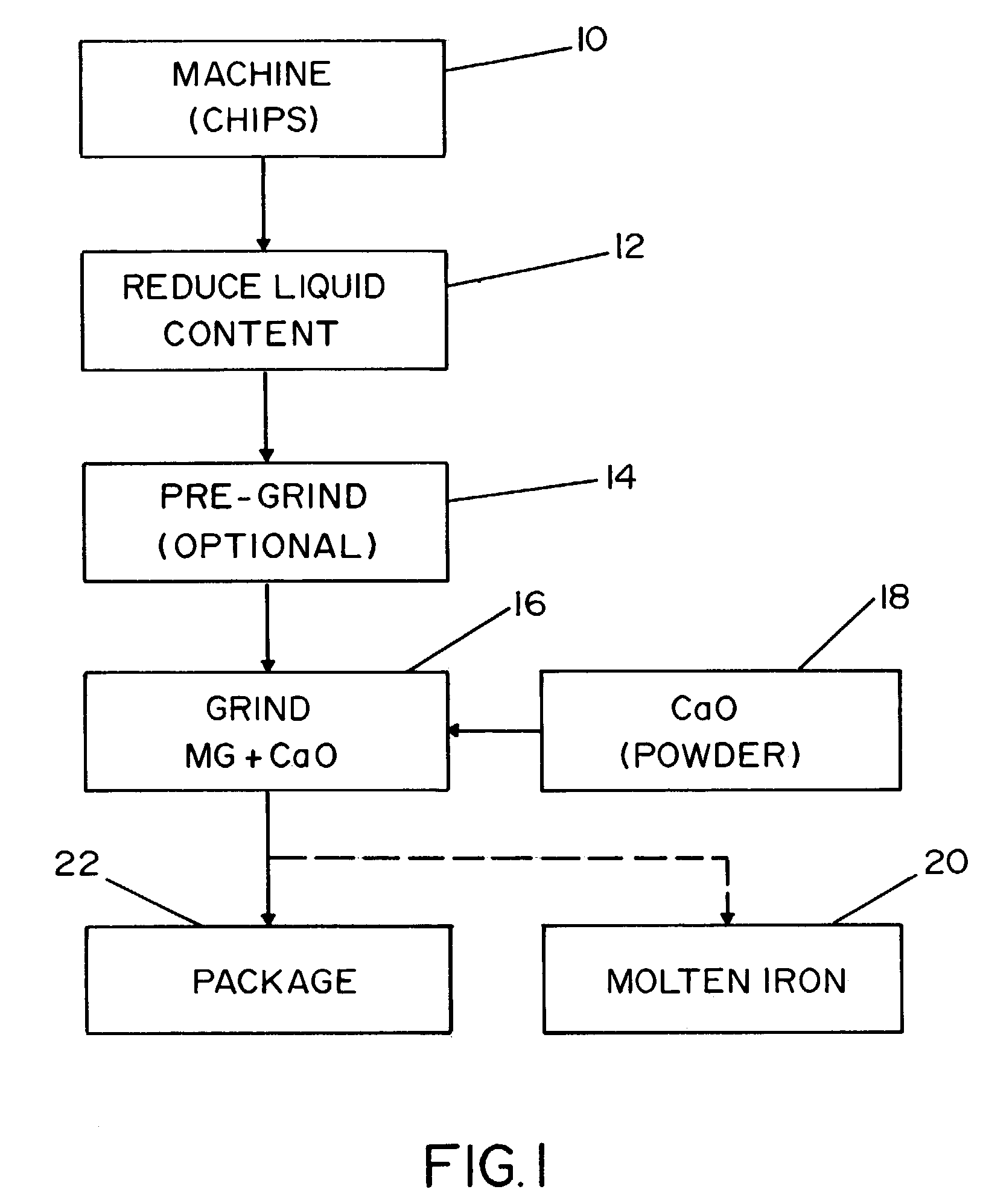Reclaimed magnesium desulfurization agent
a desulfurization agent and reclaimed magnesium technology, applied in the direction of furnace details, crucible furnaces, furnaces, etc., can solve the problems of not being reclaimed magnesium is presently not economically viable substitute for mined magnesium, and the use of reclaimed magnesium from such processes is not cost effective. , to achieve the effect of enhancing the desulfurization efficiency, reducing the sulfur removal efficiency of reclaimed magnesium in the molten iron
- Summary
- Abstract
- Description
- Claims
- Application Information
AI Technical Summary
Benefits of technology
Problems solved by technology
Method used
Image
Examples
Embodiment Construction
[0036]Referring to the drawing, wherein the showing is for the purpose of illustrating the preferred embodiment of the invention only and not for the purpose of limiting same, FIG. 1 illustrates the process for manufacturing a desulfurization agent from reclaimed magnesium scrap. Heretofore, there has not existed an economical method for reclaiming magnesium scrap for use in an industrial process, much less reclaiming magnesium scrap for use in a desulfurization process.
[0037]The demand for magnesium continues to grow in popularity as a substitute for steel and aluminum products. As more products are produced with magnesium, the amount of magnesium scrap has correspondingly increased. Magnesium metal is commonly machined with the use of cutting fluids. The cutting fluids are typically used to increase the life of the cutting tools. As a result, the magnesium scrap from such processes constitutes a mixture of magnesium turnings or chips and cutting fluid. The cutting fluid commonly i...
PUM
| Property | Measurement | Unit |
|---|---|---|
| density | aaaaa | aaaaa |
| weight percent | aaaaa | aaaaa |
| particle sizes | aaaaa | aaaaa |
Abstract
Description
Claims
Application Information
 Login to View More
Login to View More - R&D
- Intellectual Property
- Life Sciences
- Materials
- Tech Scout
- Unparalleled Data Quality
- Higher Quality Content
- 60% Fewer Hallucinations
Browse by: Latest US Patents, China's latest patents, Technical Efficacy Thesaurus, Application Domain, Technology Topic, Popular Technical Reports.
© 2025 PatSnap. All rights reserved.Legal|Privacy policy|Modern Slavery Act Transparency Statement|Sitemap|About US| Contact US: help@patsnap.com


